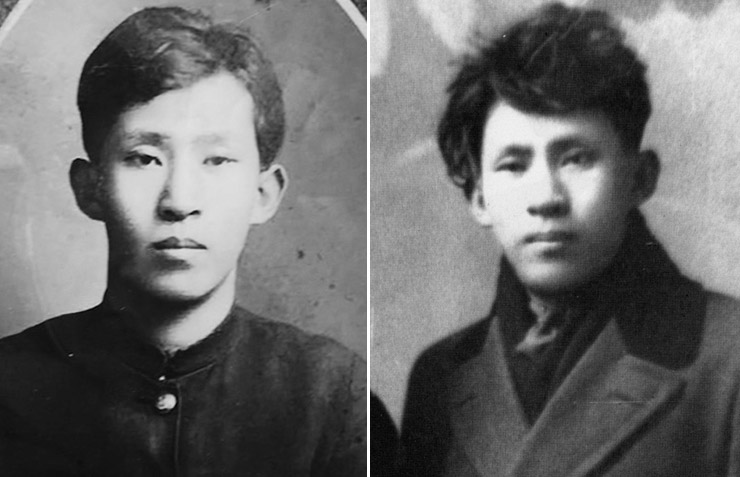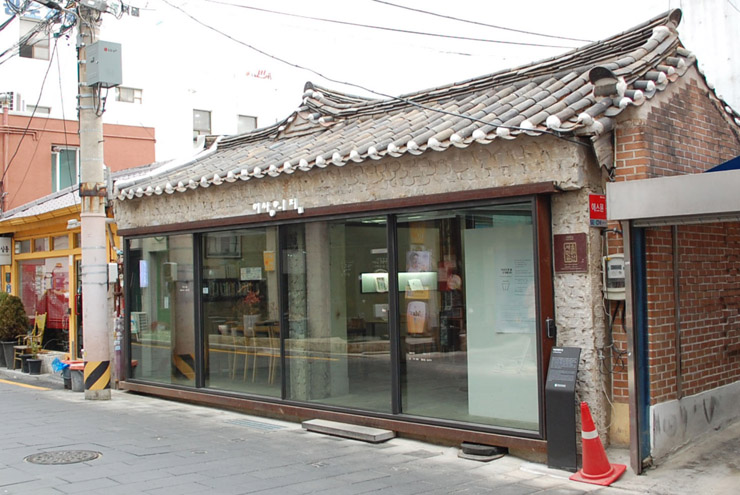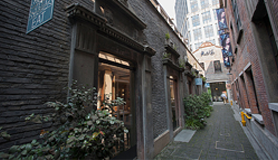
이상 (李箱, 1910-1937)
이상 (본명 김해경)은 일제강점기 활동한 한국의 시인, 소설가, 수필가이자 건축가이다. 1930년대 국내에서는 선구적인 모더니즘 작가로서 약 6년간 2000여 점의 작품을 집필하며 인간 사회의 도구적 합리성을 극복하고 미적 자율성을 정립하고자 했다. 이상의 작품활동은 한국 근대 문학이 국제적・선진적 사조에 합류하는 데 지대한 공헌을 했다는 의의가 있으며, 초현실주의와 심리소설의 개척자로도 높이 평가받는 반면, 한편으로는 인간의 인식가능성을 부정한 극단적인 관념론자로 평가되기도 한다. 생전에는 그다지 유명하지 않았고 경제 사정도 불우했다. 초현실주의 실험작인 '오감도' 등을 투고했을 때에는 독자로부터 맹렬한 비난을 받기도 했다. 당시에는 오직 그의 지인들만이 이상을 천재로 평가했으나 사후 해방과 함께 그의 뛰어난 천재성이 발굴되었다. 중・고등학교 국어 교육에서는 이미 국정 교과서 시절부터 빠지지 않고 이상의 작품이 실리고 있으며, 이상문학상 역시 그의 이름을 따서 제정되었다.
[자세히보기]출처 : 나무위키
Yi Sang (1910-1937)
Though most widely known by his pen name, Yi Sang was born in Seoul, Korea, as Kim Hae-gyeong on September 14, 1910, in Seoul. He graduated from Sinmyeong School and then entered the Donggwang School. In 1922 he was admitted to Posung School. In 1929 he graduated from Gyeongseong Engineering High School with training as an architect and for a time was employed as a draftsman in the public works department of the Government-General of Korea. In December 1929 he won first and third prizes in a design contest for the cover of Korea and Architecture, and the journal of the Korean Architecture Society, respectively. Most of his works were produced during the 1930s
[Learn more]Source : Wikipedia
ⓢ The House of Yi Sang / 이상의 집

이상의 집
통인동의 거리 한편에 ‘이상의 집’이 있다. 정확히 표현하면, 이상이 살던 집이 아닌 그가 살았던 집터이다. 이상의 흔적은 어디에도 없다. 하지만 3살부터 23살까지 20년 동안 살았던 집터이기에 인간 이상의 흔적을 유일하게 살펴볼 수 있는 장소이다. 이상이 23살 때까지 살았던 통인동 본가는 큰 한옥이었던 것으로 보인다. 집의 옛 모습은 전혀 남아 있지 않지만 본채, 행랑채, 그리고 사랑채까지 약 300여 평의 넒은 집이었던 것으로 전해진다. 1932년 큰아버지가 돌아가시자 집장사에게 팔린 집은 여러 개의 필지로 나뉘어져 그중 일부는 도로에 편입되었고 남은 10여 개의 작은 필지에 도시형 한옥이 지어져 팔려나갔다. 이상의 집은 2009년 문화유산국민신탁이 후대에 남길 첫 보전재산으로 매입해 재단법인 아름지기와 협력 사업으로 개관을 진행했다. 2011년 4월 개관하여 2013년 개보수 작업을 거쳐 2014년 3월에 지금의 모습으로 재개관했다.
[자세히보기]출처 : 서울문화재단
The House of Yi Sang
Yi Sang, who passed away at the tender age of 27 in 1937, lived at this location with his uncle, who adopted him for most of his life. Though Yi Sang was a trained architect who worked for the Japanese government during colonization, he later became a writer and poet who expressed very critical views about Japan. Although the original house was destroyed, a hanok built there in its stead stands in honor of him. Highlights from visiting the home include a beautiful iron cast door at the back of the house and a small staircase that leads to a room called the Room of Yi Sang. Once there, you can help yourself to some instant coffee or browse through a collection of his works.










 HOME
HOME




 0
0




